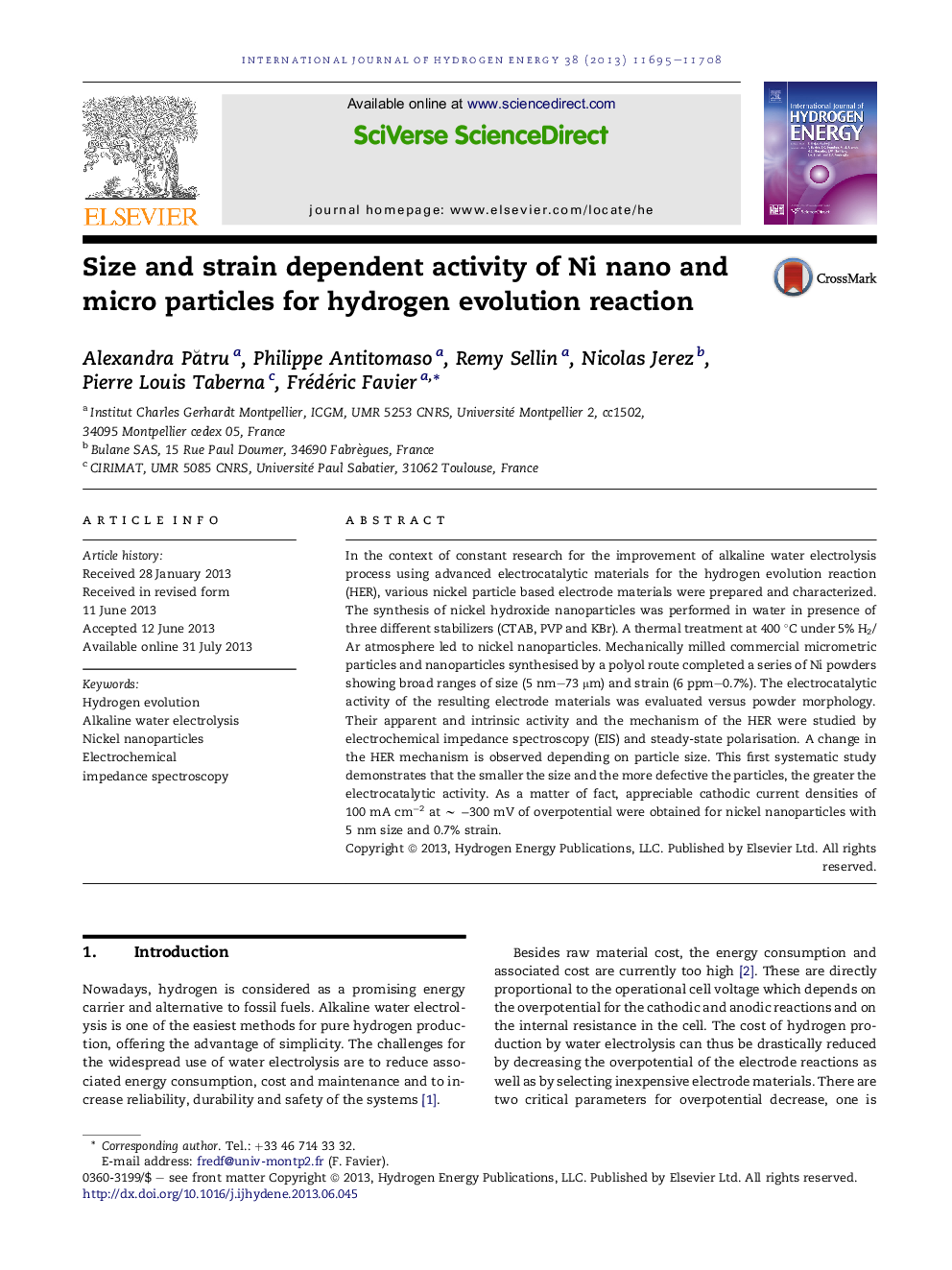| Article ID | Journal | Published Year | Pages | File Type |
|---|---|---|---|---|
| 1274885 | International Journal of Hydrogen Energy | 2013 | 14 Pages |
•First study on the HER mechanism dependence on the electrode material morphology.•Synthesis of Ni particles of various sizes (nm to μm) and constraints (ppms to 1%).•HER mechanism discussed thanks to polarisation and EIS measurements.•Cathodic current densities as high as 100 mA cm−2 at −300 mV of overpotential.
In the context of constant research for the improvement of alkaline water electrolysis process using advanced electrocatalytic materials for the hydrogen evolution reaction (HER), various nickel particle based electrode materials were prepared and characterized. The synthesis of nickel hydroxide nanoparticles was performed in water in presence of three different stabilizers (CTAB, PVP and KBr). A thermal treatment at 400 °C under 5% H2/Ar atmosphere led to nickel nanoparticles. Mechanically milled commercial micrometric particles and nanoparticles synthesised by a polyol route completed a series of Ni powders showing broad ranges of size (5 nm–73 μm) and strain (6 ppm–0.7%). The electrocatalytic activity of the resulting electrode materials was evaluated versus powder morphology. Their apparent and intrinsic activity and the mechanism of the HER were studied by electrochemical impedance spectroscopy (EIS) and steady-state polarisation. A change in the HER mechanism is observed depending on particle size. This first systematic study demonstrates that the smaller the size and the more defective the particles, the greater the electrocatalytic activity. As a matter of fact, appreciable cathodic current densities of 100 mA cm−2 at ∼ −300 mV of overpotential were obtained for nickel nanoparticles with 5 nm size and 0.7% strain.
